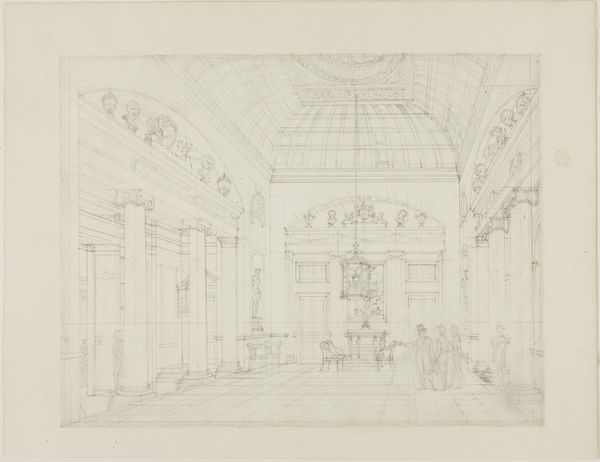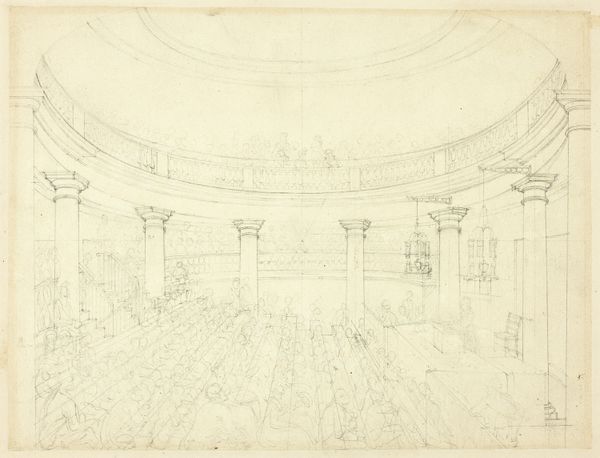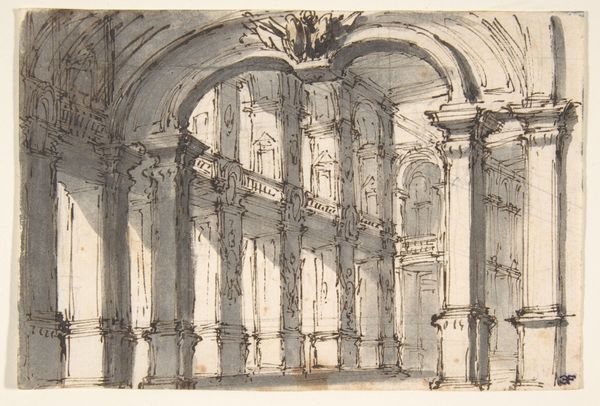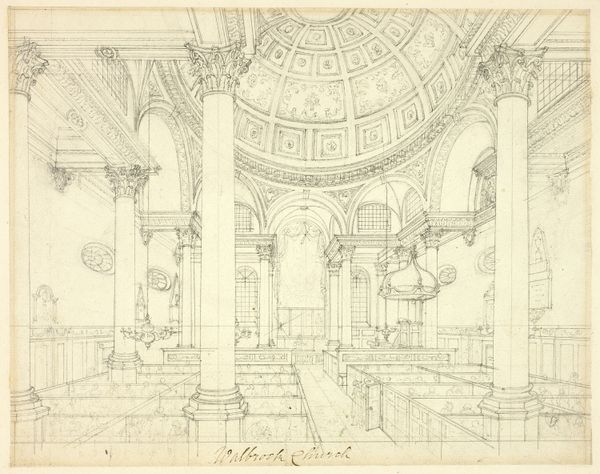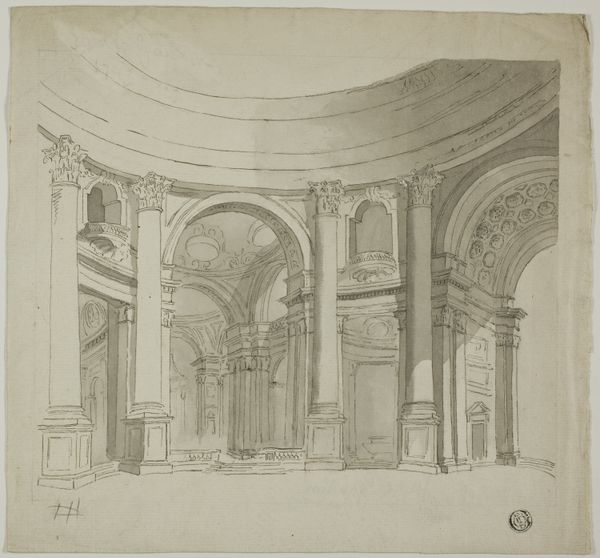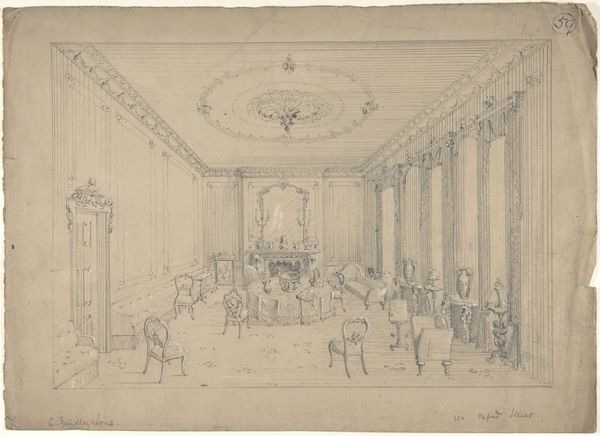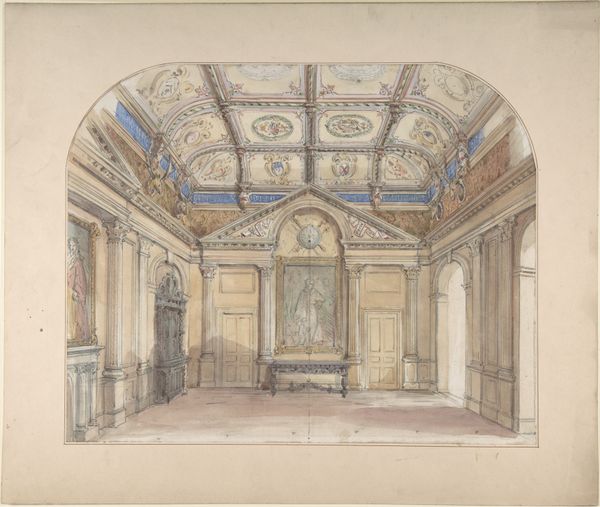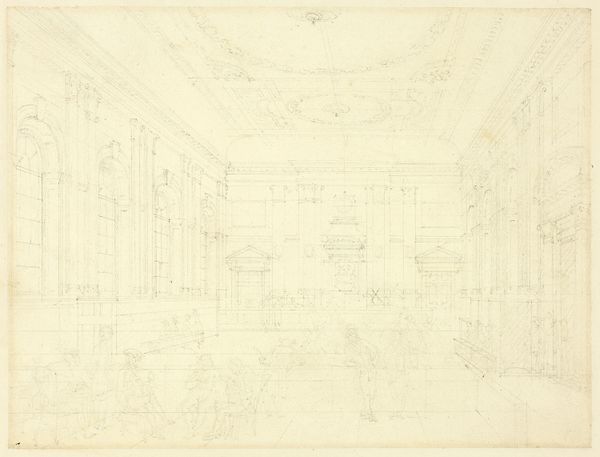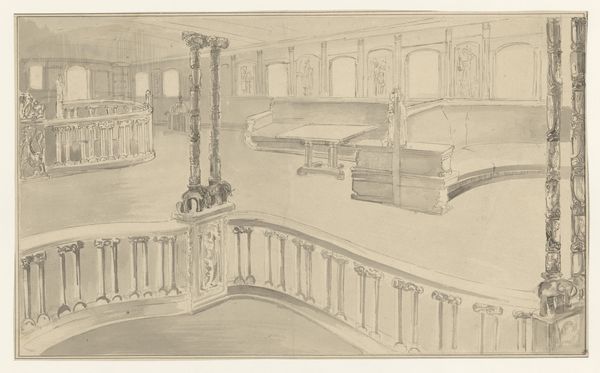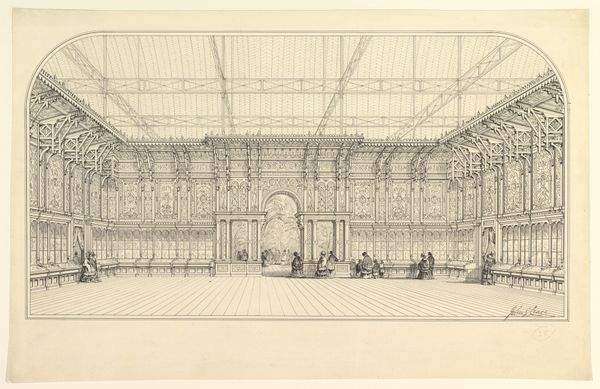
drawing, pencil, architecture
#
architectural sketch
#
drawing
#
neoclacissism
#
quirky sketch
#
sketch book
#
personal sketchbook
#
idea generation sketch
#
sketchwork
#
geometric
#
pen-ink sketch
#
pencil
#
pen work
#
cityscape
#
storyboard and sketchbook work
#
architecture
#
initial sketch
Dimensions: 33 x 26 cm
Copyright: Public domain
Curator: Let's look at "Der Kleine Chursaal in Sauerbrunn" (The Little Spa Hall in Sauerbrunn), an architectural sketch from 1848 by Johann Nepomuk Passini, rendered in pencil and ink. What is your initial reaction? Editor: It feels simultaneously grand and delicate, doesn't it? Those massive chandeliers sketched with such a light touch almost seem to float. There's a ghostliness to the space, perhaps intentional, but the almost ethereal emptiness has something melancholy about it, like it's been emptied in readiness for a ball that will never take place. Curator: Indeed, it is more than a technical drawing; there’s a palpable atmosphere. Think about the iconography of light, for instance. Chandeliers weren’t mere illumination; they signified status, opulence, and celebration. Passini subtly employs them to underscore the social aspirations connected with these gathering places. Editor: The grandeur of it all contrasts sharply with the year it was created. 1848, the year of revolutions, worldwide protests of the working class and enslaved peoples! What contradictions existed to see such ostentatious displays being planned, whilst societal tensions were bubbling over. Curator: That's precisely the tension that elevates the piece! It’s neo-Classical in its symmetry and aspiration for permanence, yet the fleeting nature of a sketch reflects a fragile socio-political context. These spa towns aimed to provide temporary refuge, projecting a sense of stability even as Europe was engulfed in turmoil. Think about how these places, and especially these halls, allowed social mixing between classes. Editor: It's a visual representation of denial, a hope of eternal structures to ride out periods of incredible and painful transition and revolution. I’m now focusing on the bare benches in the sketch; even in ‘rest’ people are facing each other – is this is a signal of unity that perhaps the artist longed for? Curator: Those simple benches provide such interesting counterpoint! A space created with aspirations to beauty, to high culture, perhaps for a brief unity or collaboration between the classes, caught on paper between dreams and hard reality. I see now a yearning for balance. Editor: Yes! I see this too now! What at first felt simply haunting now feels deliberately evocative – this piece reflects the state of 1848; chaotic aspirations and tangible fragility combined. Curator: An evocative perspective. Highlighting not just the physical architecture, but also the hopes and conflicts mirrored within the walls of "The Little Spa Hall in Sauerbrunn."
Comments
No comments
Be the first to comment and join the conversation on the ultimate creative platform.
